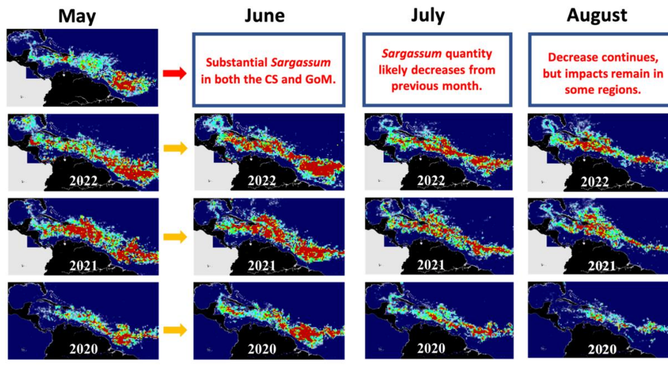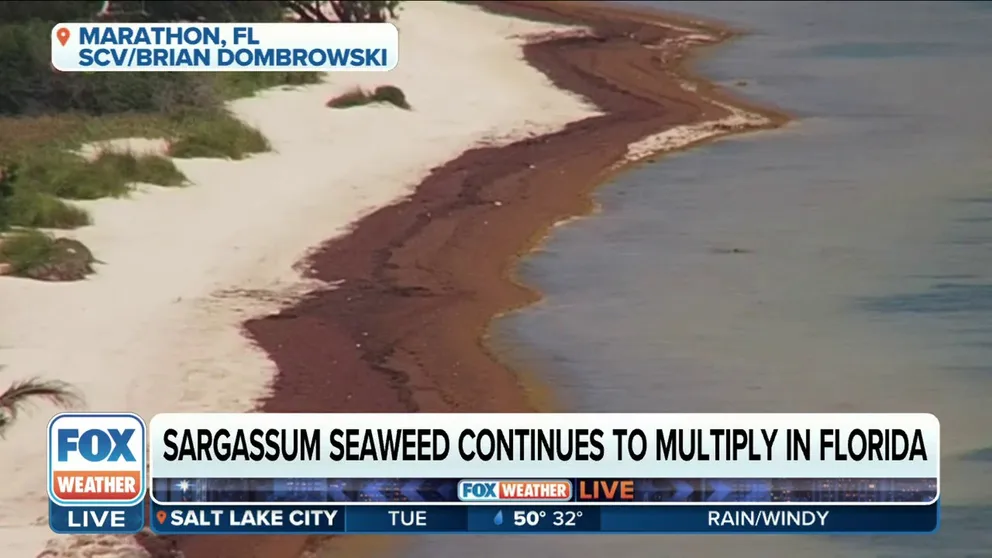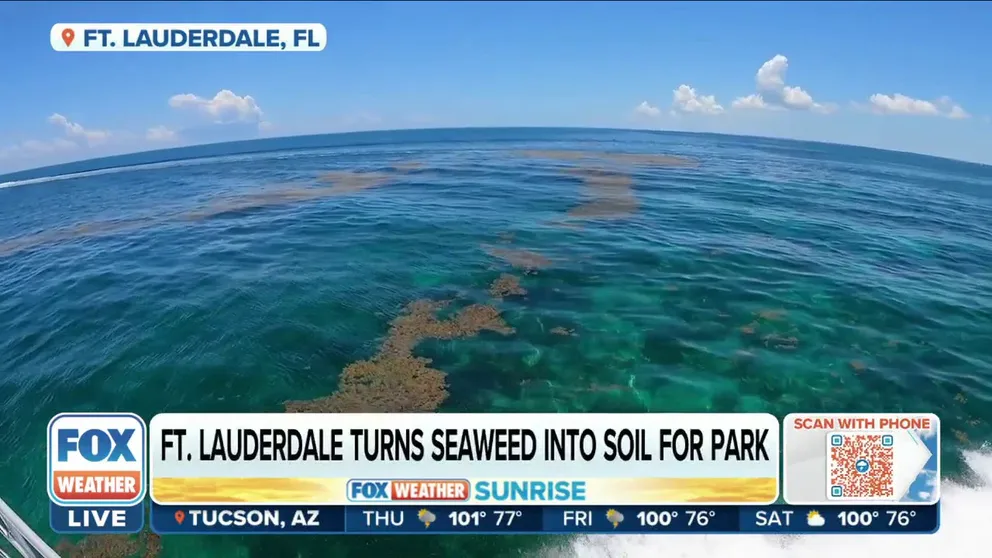'Surprise' drop in sargassum seaweed for first time in over a decade, satellite data shows
New data shows the amount of seaweed in the Great Atlantic Sargassum Belt took a downward turn in May, according to the latest outlook by the University of South Florida Optical Oceanography Lab.
Massive amounts of sargassum seaweed smother Florida's beaches
Experts said Florida's Atlantic coastline sees the potential for record amounts of sargassum this year. FOX Weather multimedia journalist Brandy Campbell spoke with beachgoers on the appearance of the seaweed.
This summer was on track to be a record year for the massive piles of sargassum seaweed washing ashore on Florida's beaches. However, new data from the University of South Florida and NASA provide a surprisingly optimistic forecast for beaches with pungent seaweed.
Sargassum seaweed is a brown macroalga most known for its rotting smell that floats on the ocean surface. Since 2011, massive seaweed blooms have washed ashore, dominating beaches in Florida and Texas, causing problems for humans and sea life.
Not only does the seaweed stink up beaches, covering shores with its blooms, but sargassum can also carry bacteria and other threats to public health.
After a record-setting 13-million-ton seaweed blob in March, new data shows the amount of seaweed in the Great Atlantic Sargassum Belt – from West Africa to the Gulf of Mexico – took a downward turn in May, according to the latest 2023 outlook by the University of South Florida Optical Oceanography Lab.
The USF lab uses NASA MODIS (Moderate Resolution Imaging Spectroradiometer) data to monitor the blooms. It provides a general outlook for current and future bloom activity in the Caribbean and Gulf of Mexico. The outlooks are released at the end of each month.
According to the laboratory, the sargassum quantity in the eastern Atlantic Ocean from March to April dropped by half and then from April to May, it was halved again.
"It’s certainly a surprise. It’s never happened in the past years," USF marine scientist Dr. Chuanmin Hu told FOX Weather.
Researchers say a decrease for this time of year has not been documented in the Great Atlantic Sargassum Belt since 2011, when large amounts of sargassum seaweed began appearing in the Caribbean Sea.

NASA MODIS satellite data showing the sargassum seaweed blooms in the Atlantic since 2011. (Image: NASA/ University of South Florida Optical Oceanography Lab)
(NASA)
Hu said past years had experienced an increase in sargassum from April to May.
The overall decrease of sargassum in the Atlantic Ocean by 15% can largely be attributed to the sharp drop in seaweed in the eastern Atlantic, according to Hu.
Improved seaweed forecast for the summer

An image showing massive amounts of sargassum seaweed invading a beach in the Florida Keys.
(SCV/Brian Dombrowski)
The new data comes as Florida expected historical levels of sargassum seaweed this summer, offering possible good news for residents and visitors on Florida’s coasts.
"At the beginning of the year, we thought this could be a record year by June or July. But now it doesn’t look like that," Hu said, adding, "It's still a major sargassum year."
Since 2011, 2023 still ranks in the top half of the worst sargassum seaweed seasons.
With the latest data, USF researchers say in June, sargassum will likely decrease in the Gulf of Mexico, meaning beachgoers may not have such a smelly experience. The USF lab forecasts the decrease to continue through August.
However, sargassum beaching events will likely continue throughout the Caribbean Sea and the Gulf of Mexico.
University of South Florida tracking sargassum seaweed using NASA/NOAA satellites
While the seaweed isn't harmful, it's unattractive for residents and visitors to the beach and can leave a stench if left untouched.
"It’s good news, but we still need to be cautious," Hu said. "That doesn’t mean the Florida beaches will be free of sargassum; they will still get some."
The decrease from April to May is another mystery surrounding the seaweed blooms.
Hu previously told FOX Weather there is still much unknown about sargassum, including where it started.
Still, Hu said there are some possible reasons for the drop in the stinky blooms. Wind, ocean circulation and nutrients from land or sea could all play a role in the size of seaweed blooms in the Atlantic.
Researchers are still investigating the cause behind the sharp decrease.

